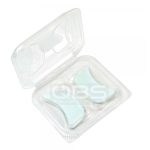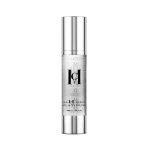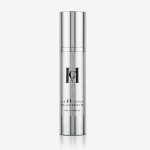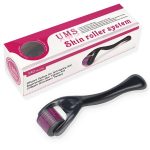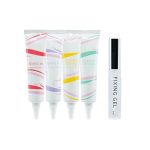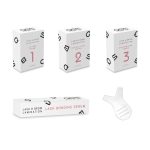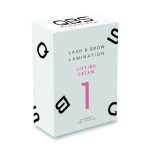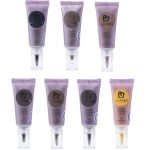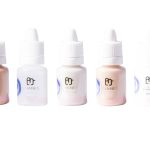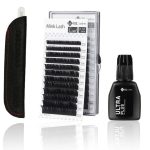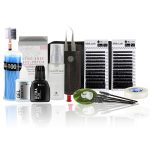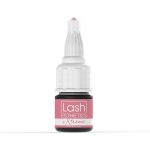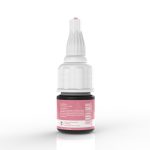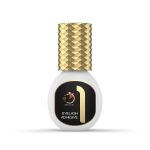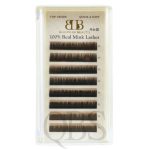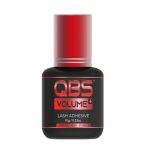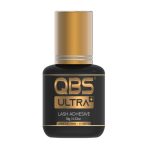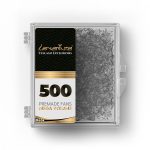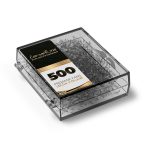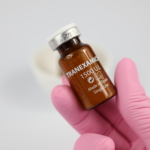Tranexamic acid is relatively new in dermatology - it was 1979 when the medicine was first reported to be effective against melasma, a pigmentary skin condition. Before that, it had been solely used as an antifibrinolytic agent to stimulate blood clotting in haemorrhages of varying genesis, for instance after surgery or in heavy periods. Subsequently, the groundbreaking study has quickly inspired a series of new ones, concerning the use of the substance in other types of hyperpigmentation. How exactly does MCCM tranexamic acid affect the skin and what makes it work? In this article we have gathered all the latest information.
Melasma is a kind of hyperpigmentation which presents itself as a mostly singular, brownish macula (a flat skin lesion that cannot be felt by palpation) mainly because of hormonal shifts (like during pregnancy or when being on the pill), but also due to family history or sun exposure. In many cases it disappears on its own after the triggering factor had been eliminated, nonetheless in some it persistently stays on the skin for a longer period of time. Since it disproportionately occurs in people of Asian and Hispanic descent, it is no wonder that first successful application of tranexamic acid in melasma took place in Japan. For similar reasons, the vast majority of the following research has been conducted with the participation of Asian people.
How does MCCM Tranexamic Acid work?
What we know from the studies, is the transformative fact that MCCM Tranexamic acid causes a significant reduction in epidermal melanogenesis, or skin pigment production. Moreover, it decreases the release of melanogenic and inflammatory mediators which normally stimulate the melanocytes (pigment-producing skin cells) to synthesize more melanin. Furthermore, it notably mitigates the local inflammation - another factor which can only exacerbate hyperpigmentation. To be more specific, it does so by reducing the number of mast cells - a type of immune cells known to release copious amounts of pro-inflammatory substances. Additionally, it decreases the formation of blood vessels in the affected skin what further calms inflammation and reduces erythema or redness. Via all of these pathways, tranexamic acid is known to greatly diminish the appearance of even significantly treatment-resistant melasma.
How to treat melasma?
There are three possible administration routes of the medicine in the treatment of melasma - it can be taken orally in the form of tablets, injected into the lower layer of the skin called the dermis or applied topically as a cream or a peel. The latter rules out the risk of occurrence of potential side effects associated with the systemic use like gastrointestinal symptoms. Since tranexamic acid does not make the skin more sensitive to the sun, it can be applied on the affected area twice a day. Usually, such a topical therapy should last for a couple of months, aiming both to treat the existing hyperpigmentation as well as prevent its recurrence.
However, the dermatological applications of tranexamic acid do not end with melasma. The studies have also confirmed the efficacy of the substance in other kinds of hyperpigmentation including residual acne scars, sun spots and rosacea. With regard to the latter, tranexamic acid has been proven to particularly reduce the expression of rosacea-influencing immune genes like TLR2, KLK5 and Camp. Such discoveries only open the door to the further exploration of the benefits of tranexamic acid.
Last but not least, research has also proven the advantageous influence of the medicine on the state of the skin itself. Tranexamic acid substantially impacts the skin hydration and maintains the proper TEWL, or transepidermal water loss, as well as supports the healthy structure of the skin’s protective lipid mantle. These kinds of actions visibly improve the condition of the skin and help it regenerate.
If you are struggling with an even extremely persistent type of hyperpigmentation, especially melasma, tranexamic acid may be the right innovative solution for you. MCCM Medical Cosmetics offers it at its best safe concentration to maximize the desired results without causing skin irritation. Try out T50T35 Tranexamic Acid Peel and enjoy a new, brighter complexion with an equally stunning texture. You can use it either as the main treatment in your regimen or as an adjunctive product to enhance another whitening therapy.
MCCM Tranexamic Acid is available in 10ml vials and comes in a box of 5 pieces.
